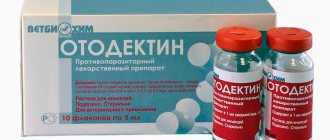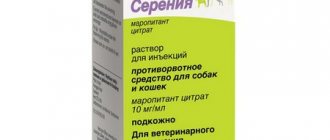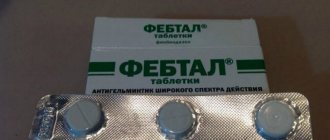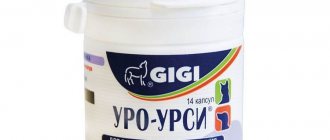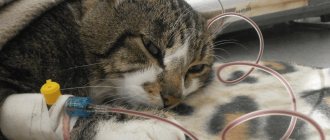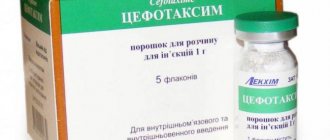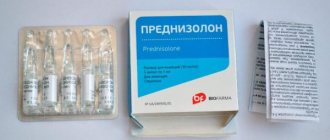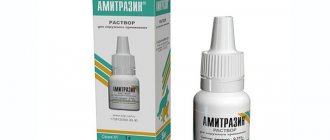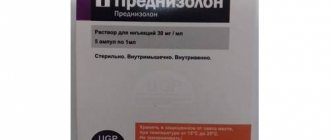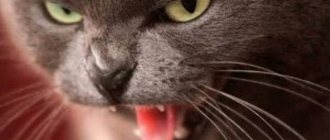The pharmaceutical drug "Lincomycin" for cats is a highly effective antibiotic that acts against gram+ microorganisms. The instructions for use describe in detail all the features of treating cats with it, but it is also important to consult a veterinarian before giving an antibacterial agent to your pet. "Lincomycin" is considered a potent drug, so special care must be taken when using it.
Storage of lincomycin for veterinary use
Should be stored at room temperature (15-30 °C) in an airtight container. The injection form of lincomycin is stored at room temperature; Avoid freezing.
According to available veterinary data, lincomycin hydrochloride for injection is compatible, for at least 24 hours, with the following IV infusion solutions and drugs: 0.9% sodium chloride solution, Ringer's solution for injection, amikacin sulfate, cephalothin sodium, chloramphenicol sodium succinate (levomycetype), cimetidine hydrochloride, cytarabine, sodium heparin, penicillin G potassium/sodium salt (for 4 hours only), polymyxin B sulfate, tetracycline hydrochloride, B vitamins with vitamin C.
According to available data in veterinary medicine, lincomycin is incompatible with the following drugs
(or the data are contradictory, or there is a dependence on concentration and/or time): ampicillin sodium, carbenicillin disodium salt, methicillin sodium (meticillin sodium salt), phenytoin sodium (diphenin). Compatibility depends on pH, concentration, temperature and solvent used. For more detailed information, see specialized literature.
pharmachologic effect
Pharmacological action of lincosamide antibiotics lincomycin and clindamycin
have a similar mechanism and spectrum of action, however, lincomycin is usually less active against sensitive microorganisms. There is complete cross-resistance between these drugs, while partial cross-resistance is observed between lincosamides and erythromycin. Depending on the concentration of lincomycin preparations in the area of localization of the infectious process and the sensitivity of the microflora to it, it can have both bacteriostatic and bactericidal effects. It is believed that lincosamides act by binding to the 50S ribosomal subunits of drug-sensitive microorganisms, which leads to suppression of the formation of peptide bonds.
Most aerobic gram-positive cocci are sensitive to lincosamides, including staphylococci and streptococci (but not to Strep, faecalis). Other microorganisms, usually sensitive to the drug: Corynebacterium diphtheriae, Nocardia as tern ides, Erysepelothrix, Mycoplasma sp. Anaerobic bacteria that are usually susceptible to lincosamides are Clostridium peefringens, C. tetanl (but not C. difficile), Bacteroides (including many strains of B. fragilis), Fusobacterium, Peptostreptococcus, Actinomyces and Peptococcus.
Use of lincomycin in veterinary medicine
Various forms of lincomycin are approved for use in dogs, cats, pigs and in combination with other drugs for chickens. Because clindamycin is generally better absorbed and more active and possibly less toxic, it has generally replaced oral and parenteral lincomycin in the treatment of small animal species. However, lincomycin is a cheaper drug and is therefore still used by many veterinarians. For more information, see Pharmacological Action or Dosage.
Pharmacokinetics of lincomycin in animals
Pharmacokinetics in animals.
The pharmacokinetics of lincomycin has not been sufficiently studied. If no other information is available, the following information relating to the person may be used. The drug, according to the instructions for use, is quickly absorbed from the intestines; Only about 30-40% of the total dose is absorbed. Food reduces both the degree and rate of absorption of the drug. After oral administration, the concentration in the blood serum reaches its maximum value after 2-4 hours. With intramuscular administration, the maximum concentration of the antibiotic lincomycin is twice as high as its concentration after oral administration; observed approximately 30 minutes after injection.
Lincomycin is distributed into most animal tissues.
Therapeutic levels of the drug are found in bone, synovial, pleural, peritoneal fluids, bile, skin and cardiac muscle. If inflammation of the meninges is noted, the concentration of the drug in the central nervous system can reach 40% of its concentration in the blood serum. Depending on the concentration, lincomycin binds to plasma proteins by 57-72%. It penetrates the placenta, is excreted in animal milk and is found there in a concentration equal to its concentration in plasma.
Lincomycin is partially metabolized in the liver. The drug in unchanged form and its metabolites are excreted in urine, feces and bile. The half-life of lincomycin may be prolonged in animals with impaired renal or hepatic function. In small animals, the elimination half-life is reported to be 3–4 hours.
Lincomycin
Lincomycin
Instructions for the use of Lincomycin solution 10% for the treatment of diseases of bacterial etiology in animals (developer organization: Mosagrogen CJSC, Moscow)
I. General information Trade name of the drug: Lincomycin 10% solution (Lyncomycini 10% solutio). International nonproprietary name: lincomycin.
Dosage form: solution for injection. Lincomycin 10% solution in 1 ml contains lincomycin as an active ingredient - 100 mg, and as auxiliary components: Trilon B - 0.1 mg, nipagin - 1.0 mg, as well as water for injection up to 1 ml. In appearance, the drug is a transparent, colorless or slightly yellowish liquid.
Lincomycin 10% is produced packaged in 10, 20 and 100 ml in glass bottles of appropriate capacity, sealed with rubber stoppers reinforced with aluminum caps.
Store the medicinal product in the manufacturer's sealed packaging in a dry place, protected from direct sunlight, separately from food and feed, at a temperature of 5°C to 25°C. The shelf life of the medicinal product, subject to storage conditions, is 2 years from the date of manufacture. After opening the bottle, unused remains of the drug cannot be stored.
II. Pharmacological properties Lincomycin 10% solution belongs to the antibacterial drugs of the lincosamide group. Lincomycin exhibits the greatest activity against most gram-positive microorganisms, including staphylococci, streptococci, pneumococci, clostridia, corynobacteria, and mycoplasmas.
Active against microorganisms, especially staphylococci, resistant to other antibiotics. Resistance of microorganisms to lincomycin develops slowly. Lincomycin has no effect on gram-negative bacteria, fungi and viruses. The mechanism of action is associated with the suppression of protein synthesis in microbial cells.
The maximum concentration of the antibiotic in the blood is reached 20-40 minutes after the injection. The therapeutic concentration is maintained for 16-24 hours. Lincomycin is quickly and well absorbed from the injection site and penetrates all organs and tissues of the body, including bone tissue. Lincomycin does not undergo biotransformation in the body and is excreted mainly unchanged in urine and bile.
Lincomycin 10% solution in terms of the degree of impact on the body is classified as a moderately hazardous substance (hazard class 3 according to GOST 12.1.007-76).
III. Directions for use Lincomycin 10% is used in pigs, calves, dogs and cats for the treatment of respiratory diseases, actinomycosis, osteomyelitis and other diseases caused by antibiotic-sensitive microorganisms.
The drug is indicated for the treatment of enzootic pneumonia and dysentery in pigs, as well as in the treatment of bacterial arthritis in pigs caused by Staphylococcus spp., Streptococcus spp., and Mycoplasma spp..
A contraindication for the use of the drug is individual hypersensitivity of animals to lincomycin.
The solution is administered intramuscularly or intravenously (slowly) once a day in the following doses:
| Animal species | Method of administration | Dose, ml/10 kg | Duration of treatment, days |
| Pigs | intramuscularly | 1 | 3-7 |
| Calves | intramuscularly | 1 | 2-4 |
| Dogs | intramuscularly | 2 | 3-7 |
| intravenously | 1 | 3-7 | |
| Cats | intramuscularly | 2 | 3-7 |
| intravenously | 1 | 3-7 |
No overdose symptoms have been identified in animals. The specific effects of the drug upon its first use and upon its withdrawal have not been established. If the interval between two administrations of the drug accidentally increases, it should be administered as soon as possible in the prescribed dosage. When using Lincomycin 10% in accordance with these instructions, side effects and complications in animals, as a rule, are not observed.
We invite you to familiarize yourself with Dolphin Doctors: how animals help treat disabled children
Lincomycin should not be used in animals with developed rumen digestion over the age of 6 months.
It is not recommended to use the drug simultaneously with thiamphenicol and chloramphenicol.
Slaughter of calves and pigs for meat is permitted no earlier than 3 days after the last use of the drug. The meat of animals forcedly killed before the expiration of the specified period can be used to feed fur-bearing animals.
IV. Personal preventive measures When working with Lincomycin 10%, you should follow the general rules of personal hygiene and safety precautions provided for when working with medications. After finishing work, wash your hands with warm water and soap. In case of accidental contact of the drug with the skin or mucous membranes of the eye, they must be rinsed with plenty of water.
People with hypersensitivity to the components of the drug should avoid direct contact with the solution. If allergic reactions occur or if the drug accidentally enters the human body, you should immediately contact a medical facility (bring with you the instructions for use of the drug or the label).
Empty drug bottles must not be used for household purposes; they must be disposed of with household waste.
Organization-; 117545, Moscow, 1st Dorozhny proezd, 1.
With the approval of this Instruction, the Instructions for the use of Lincomycin 10% become invalid. solution for treating animals with diseases of bacterial etiology, approved by Rosselkhoznadzor on December 6, 2005.
Contraindications to the use of lincomycin in pets
Contraindications, precautions, effects on reproduction Although there are known cases of parenteral administration of lincosamides to horses, cattle and sheep, they are considered contraindicated for use in rabbits, hamsters, guinea pigs, horses and ruminants, since there is a possibility of developing serious gastrointestinal disorders, including death.
Lincomycin is contraindicated in animals with hypersensitivity to it or a history of monilial infection.
Lincomycin penetrates the placenta of animals, its concentration in the umbilical cord blood is about 25% of its concentration in the mother's blood serum. The safety of antibiotic use during pregnancy has not been established, but no teratogenic effects have been noted.
Since lincomycin is excreted in animal milk, suckling newborn kittens and puppies whose mother receives the drug may develop diarrhea.
Restrictions
Despite the high effectiveness and moderate toxicity of the drug, its use is not always permitted. The following contraindications must be taken into account:
- Increased individual susceptibility of the pet’s body to the drug or its individual components, including lincomycin itself.
- The period of pregnancy and lactation in females.
- Presence of severe kidney disease.
- The presence of severe liver pathologies.
- The presence of a problem of rumen digestion.
Overdose may cause side effects. This could be an allergic reaction , which will manifest itself differently in each pet. In more severe cases, thrombocytopenia or leukopenia develops. The drug is prohibited for long-term use. Otherwise, there is a risk of developing candidiasis. If the dosage is exceeded, diarrhea may occur.
The medicine should be stored in a dry, dark place. The air temperature should be from 5 to 24 degrees. In such conditions, the drug, which is produced in capsules, can be stored for a couple of years. If Lincosamine is released in special bottles, then the shelf life is 4 years.
Side effects
Side effects, warnings, side effects
, described in dogs and cats, are gastrointestinal disorders (gastroenteritis: vomiting, loose stools, rarely bloody diarrhea in dogs). According to the instructions for use, according to available data, after an IM injection, pain in the injection area may be noted. Rapid intravenous administration of the drug can lead to hypotension and cardiac and respiratory arrest.
In pigs, when the antibiotic lincomycin is administered, gastrointestinal disorders may also occur.
Otitis media in dogs: identifying symptoms and treating them at home
Due to the specific structure of the ear, dogs are often susceptible to otitis media. Inflammation of the middle ear in dogs is often diagnosed; internal and external are less common.
The disease causes discomfort and severe pain to the pet. A visit to the veterinarian will help free the dog from uncomfortable sensations and prevent it from developing into a chronic form. An advanced disease can develop into complete deafness and provoke the death of a pet.
Drug interactions
Drug interactions are described in the instructions for use of the drug. Kaolin (found in most over-the-counter antidiarrheals) when used concomitantly with lincomycin reduces the absorption of the latter in animals by approximately 90%. If it is necessary to use both drugs, they should be given 2 hours apart. Since lincomycin can cause severe diarrhea in some animal species, it is necessary to prescribe antidiarrheal drugs to prevent the development of life-threatening intoxication. Unlike lincomycin, the absorption of clindamycin is not significantly affected by kaolin.
Lincomycin in animals and birds has the property of blocking neuromuscular transmission, therefore, together with muscle relaxants, it should be prescribed very carefully.
Effect on laboratory parameters: a slight change in the performance of a test that determines the functional state of the liver (increased ALT, AST, alkaline phosphatase) may be observed, but this does not have significant clinical significance.
Preventive measures
In order not to wonder how to treat otitis in a dog, you should carefully monitor your pet.
For prevention purposes, the following measures should be taken:
- regular examination of the dog's ears;
- cleaning when dirty;
- plucking fur from the ear;
- Never rinse the ears of a healthy animal, this increases humidity in the ear;
- in slush and frost, pets with chronic otitis media should wear a hat;
- visit the veterinary office at least 2 times a year for a preventive examination.
We wish your pet a speedy recovery.
Doses of lincomycin in veterinary medicine
Doses for dogs:
For infections caused by sensitive microflora:
- dose 22-33 mg/kg per os every 12 hours;
- lincomycin is prescribed to dogs in doses of
15 mg/kg per os every 8 hours; 10 mg/kg IV or IM every 12 hours; - dosed at 15-25 mg/kg per os every 12 hours;
- for mastitis: 15 mg/kg per os 3 times a day for 21 days;
- For staphylococcal infections of dogs: the dose of lincomycin is 10-15 mg/kg per os 3 times a day.
Doses of lincomycin for cats:
- For infections caused by sensitive microflora:
- doses for cats: 22-33 mg/kg per os every 12 hours
- There are reports in feline veterinary medicine of doses of 15 mg/kg per os every 8 hours; 10 mg/kg IV or IM every 12 hours
- give the drug in doses of 15-25 mg/kg per os every 12 hours
- for cat mastitis: 15 mg/kg per os 3 times a day for 21 days.
- For staphylococcal infections: dose 10-15 mg/kg per os 3 times a day
Actinomycosis
This is a dangerous fungal disease caused by one of the types of radiant fungi. It is considered conditionally pathogenic, since it can be present in the body of a healthy cat without causing any consequences. When the animal’s immunity is low, it becomes activated and the cat gets sick.
Sites of infection include:
- mucous membranes of the nasopharynx;
- gastrointestinal tract.
In the case of acute or chronic inflammatory process, the fungus begins to become active. The gateway to infection can be oral trauma or surgery. The addition of a secondary staphylococcal infection aggravates the course of the disease. In such cases, lincomycin injections are prescribed for cats and dogs.
We invite you to read: Foreign White: detailed description of the breed with photos
Much less frequently, the focus of the disease can occur in the cat’s genitourinary system. The most favorable prognosis is likely when actinomycosis is localized in the maxillo-cervical area. The disease can be noticed when the cat has difficulty eating. The mobility of the jaws and chewing muscles is impaired. Body temperature rises, but not high.
The cat’s condition is much more severe if fungal colonies are located in the abdominal or chest cavity:
- heat;
- apathy;
- cough - first dry and then wet;
- general weakness.
Penetrating through damaged tissue, the fungus forms colonies. In the affected areas, a dense infiltrate occurs, the skin becomes inflamed and becomes purple in color. Subsequently, it bursts, long-term non-healing wounds and fistulas with purulent contents and a huge amount of fungal spores are formed. Very often, due to the addition of a secondary infection, it is necessary to treat the cat with lincomycin, and the fistulas must be opened and drained. The disease is deadly for pets and requires immediate treatment.
Learn about essential antimicrobials in animals
- Trichopolum in veterinary medicine
- Instructions for the use of the antibiotic Baytril in animals
- Metronide in veterinary medicine. Instructions for use, doses, indications and contraindications
- Use of ceftriaxone for animals
- Explore the breadth of Metrogyl's antibacterial effect in animals
- Instructions for the use of doxycycline in animals. Study the breadth of doxycycline's antibacterial effects in animals. Calculate the optimal dose of the drug for different types. Improve therapy effectiveness by 140%
- Metronidazole (Metronidazole) for animals (instructions for use in veterinary medicine, doses, indications and contraindications)
- Atovaquone (ATOVAQUONE)
- Azithromycin for veterinary use
Owner Information: Owners should contact a veterinarian immediately if signs of severe, prolonged or bloody diarrhea occur.
Release form and preparations of lincomycin
Veterinary drugs:
- Lincomycin in tablets for oral use: 100 mg, 200 mg, 500 mg;
- Lincocin. Approved for use in dogs and cats.
- Lincomycin, oral solution, 50 mg/ml in 20 ml drip bottles; Lincocin® Aquadiops (Upjohn); (Rx). Approved for use in dogs and cats. Lincocin, sterile solution for injection, 100 mg/ml in 20 ml vials;
- Lincocin* (Upjohn); (Rx). Approved for use in dogs and cats. Lincomycin, sterile solution for injection, 25 mg/ml in 100 ml vials, 50 mg/ml in 50 ml vials and 100 mg/ml in 50 ml vials;
- Veterinary Lincocin® (Upjohn); (OTS). Approved for use in pigs. Slaughter is permitted 48 hours after discontinuation of the drug. Lincomycin in 40 g packages (16 g of lincomycin) with the addition of 64 gallons of drinking water;
- Lincocin® Soluble Powder (Upjohn); (OTS). Approved for use in pigs. Slaughter is permitted 6 days after discontinuation of the drug.
- Combinations of lincomycin with feed/water are also available for use in pigs and poultry.

